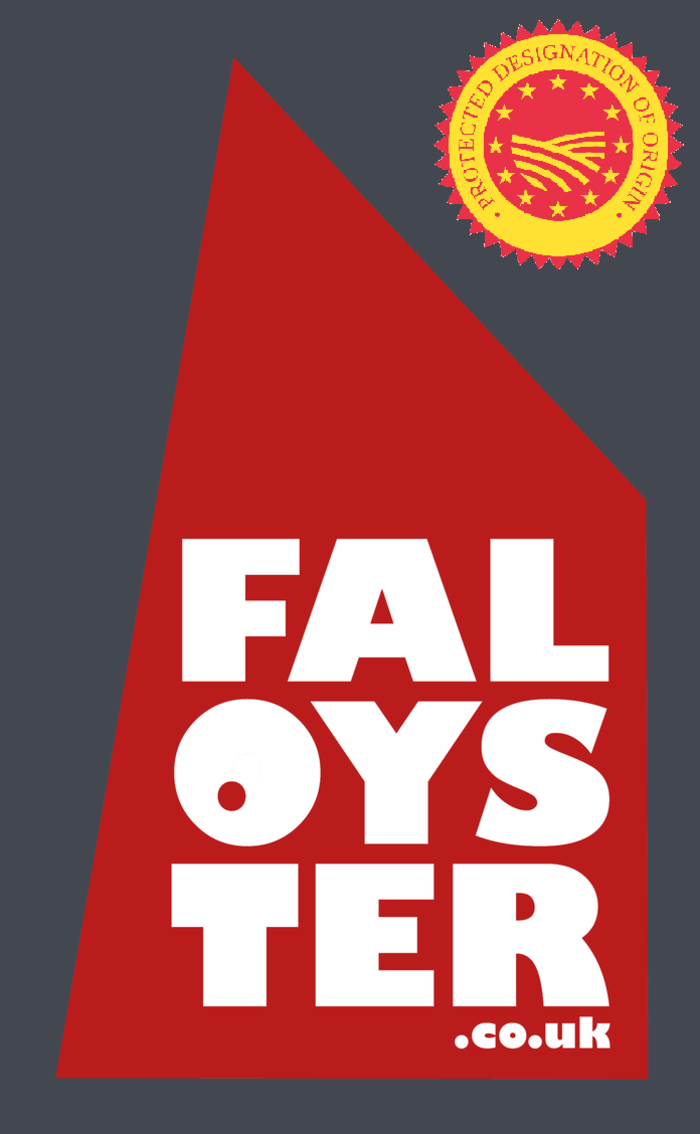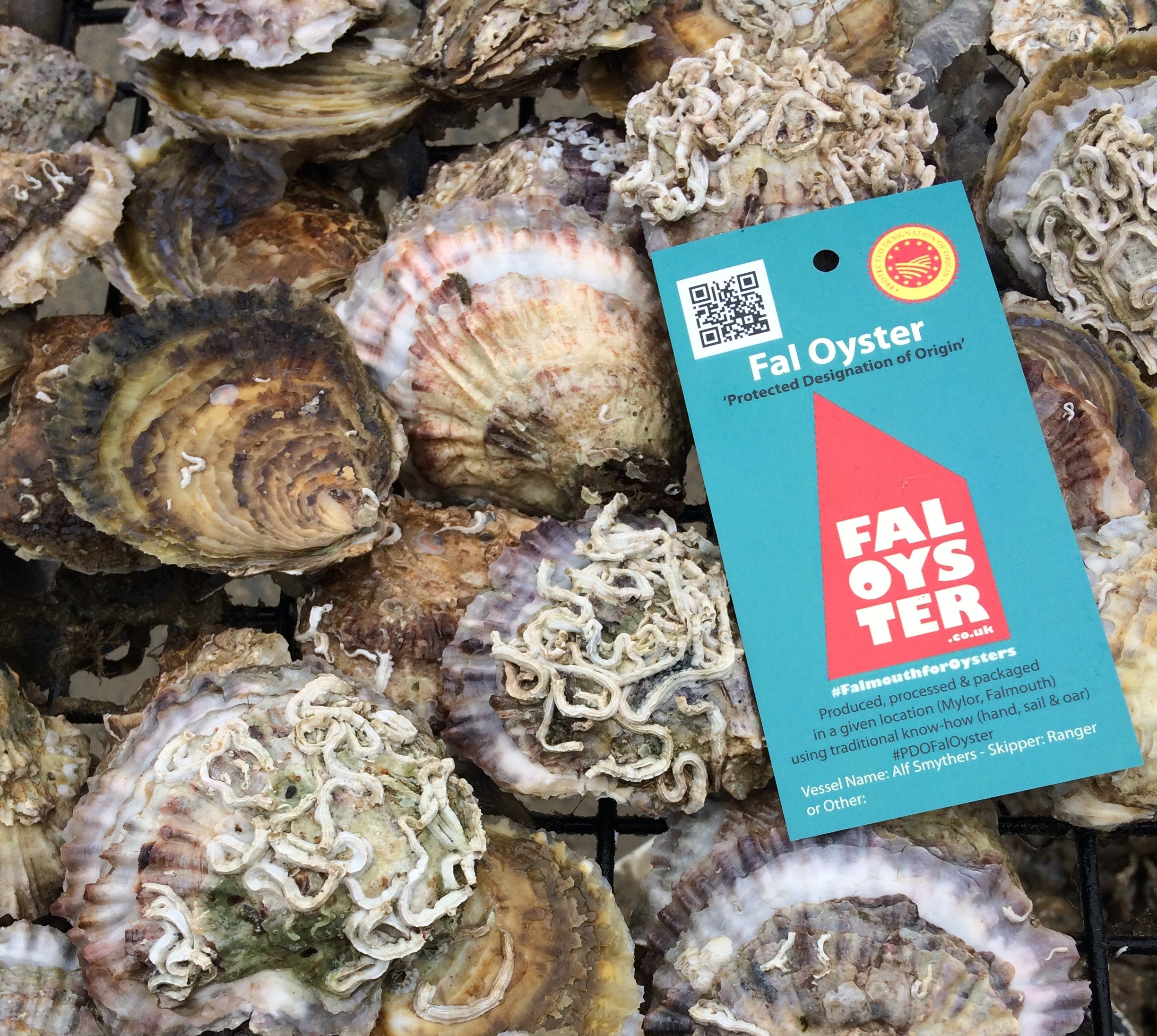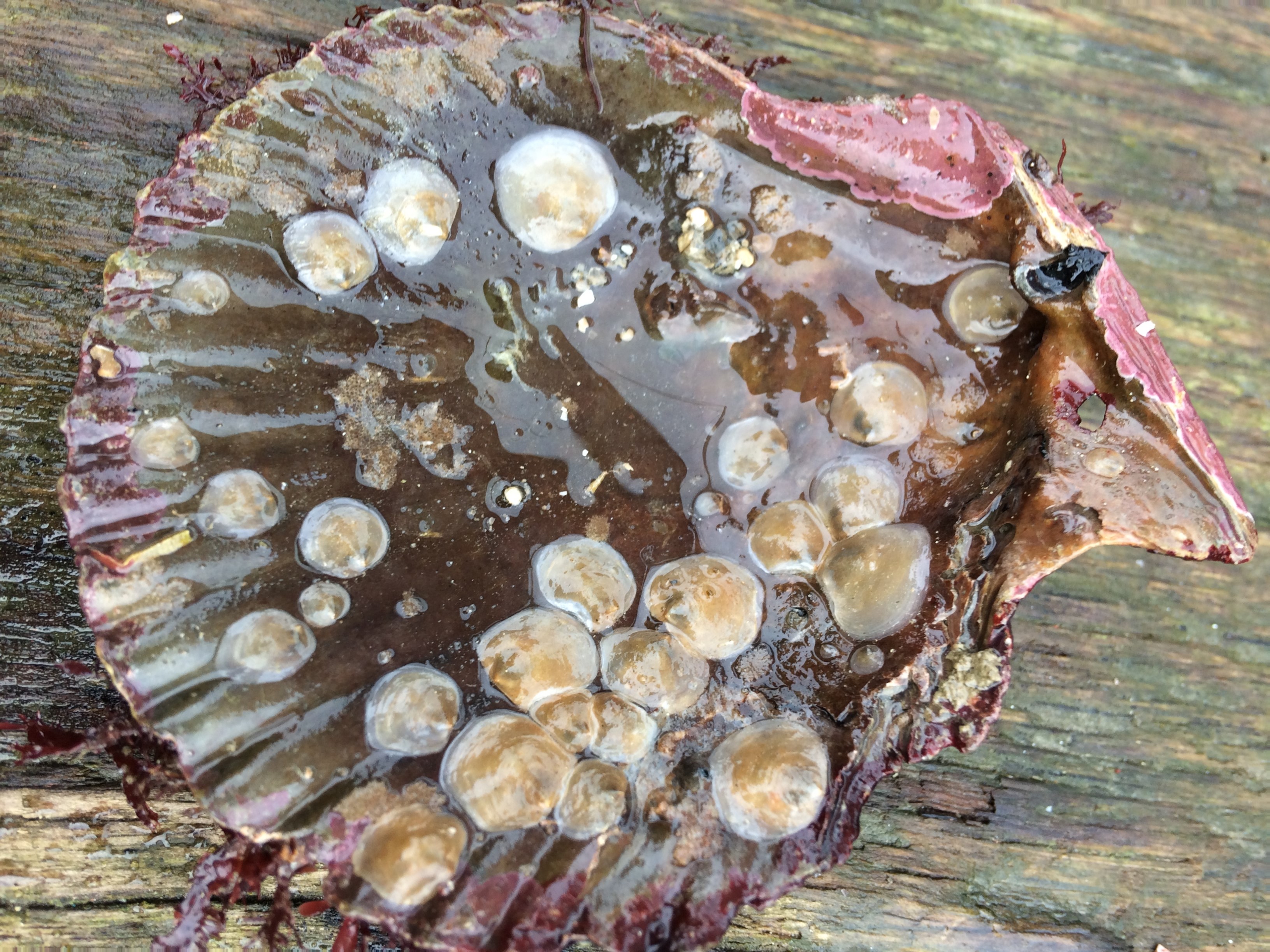www. Fal Fishery Coop CIC .co.uk
(You will need a BBC Sounds App Account)

Fal Fishery Cooperative
Community Interest Company (CIC)
A new website will be coming soon, meanwhile we have forwarded the new domain address to a page on this website to keep you informed of developments.
If you would like to sign up for news please follow this link:
Mailchimp News from Fal Fishery Cooperative CIC
New crowdfunder pitch NOW LIVE ...
Saving 'Ester'
A Cornish Native Oyster
Firstly, the CIC was incorporated on 30th March 2019, the 'last day of the 2018-19 fishing season' following a meeting held at Mylor Yacht Club at the end of January 2019. The previous chairman, of the Cornwall IFCA Fal Fishery Management Committee, sent out a letter and a questionnaire to licenced oyster gatherers and asked for feedback on "ways to improve the stocks of native oysters"... the resulting comments were of mixed opinions, approximately 50% "wanted to see improvements" and the other 50% "could see no need for any change"... unfortunately most of those that wanted to see improvements have since given up as the stocks and the markets have made it "unviable".
Having incorporated the FFCCIC I then personally spent last summer writing 3 big applications for funding, unfortunately one for the restoration of 'Shadow' was unsuccessful, the second for a 'floating hatchery' was also unsuccessful but resubmission was recommended and the third for a 'storage facility' was too late for EU Marine Fisheries Funding so I was told to resubmit to the new UK MFF in 2020.
The latest meeting was held on the 30th January 2020 I invited: Natural England, Cornwall Council, Cornwall Chambers, Cornwall Marine Network, National Lobster Hatchery, University of Exeter and other stakeholders, the turnout was great and the general consensus was that "the fishery really does need some support" and many have offered their services to future applications... which is great because it is too much for one man to focus on, especially when it is a public fishery that dates back centuries!
Thank you to my friends & family that donated through our Just Giving page :
(Sign up to Mailchimp AND Donate towards our start up costs and we will tell you about the grant applications too) https://www.justgiving.com/crowdfunding/
cornishnativeoysterrestoration
Our aims and objectives are to work with oyster gatherers, universities, researchers, marine biologists, harbours, authorities and stake holders to restore the unique native oyster that is in decline on the Fal Fishery. We are currently applying for funding to deliver the projects under a Community Led Development Strategy and other UK funding schemes.
"If not us, who? If not now, when?"
- 85-95% of the worlds population of European Native Oysters have been lost due to overfishing, disease and pollution - we aim to use what stock is left on the Fal Fishery to kick start a restoration program...
The Principle Scientific Officer for the Fal Fishery Regulatory Authority stated "I fear we might be at a density of native oysters (1 per 20m2) that would make successful reproduction incredibly difficult" - we aim to store hatchery produced stock and legal juveniles too small to eat in a biomass greater than 5m2...
There is only one UK hatchery, yet there are already 7 restoration projects in the UK alone that are struggling to source disease free native oyster seed - with a 1% fertilization and 67% survival each year we aim to create a million juveniles in year 4 from our local hatchery...
Firstly biomass is absolutely critical for reproduction to most seafood species, without it habitats are lost as well as economic viability for communities that have relied on it for millennia. Secondly scientific evidence is required for all aspects of fishery management. Thirdly economic viability is hard when produce is sold to grow on in other fisheries without any recognition or reputation when rebranded and sold as a competitors product.
In Cornwall we have 4 Protected Food Names: Cornish Pasty and Cornish Sardines have a Protected Geographical Indication (PGI) because the ingredients or shoals are not necessarily Cornish, whereas Cornish Clotted Cream and Fal Oyster have Protected Designation of Origin (PDO) because the milk must be Cornish and the oyster must be born on the Fal! So why sell the juvenile oyster for low value only for it to be rebranded and sold for a higher value because of its quality?
“Evidence for economic viability” – to be honest, many years ago I thought the most important thing that is lacking on the Fal Fishery was the availability of marketable/edible grade (80mm/80g) PDO Fal Oysters. Little did I know of the real importance of mature the 4-5 year olds for the long term benefits of the reproductive biomass and ecosystem services. While fishermen are paid £2.50-£4pkg, the fact is a kilo could comprise of 20 x 67mm/50g oysters that are simply sold to grow on in other fisheries for 12p-20p each, merchants can sell 10 x 100g processed PDO Fal Oysters for 80p-£2 each and London restaurants charge £5 or £6 each!
A 2yr old can produce 500,000 larvae and only 1 might survive 12 months, a 4yr old can produce 1,000,000 larvae and 2 might survive, but after 4 years 1+1+2=4 might be left after harvesting compared to maybe none left after harvesting a 2yr old!!
Less than 100 years ago 200 vessels sold 300 tonnes from the Fal Fishery!
“The technical risks are very high” – not at all when compared to the risk of indigenous native oysters not reproducing due to the sparse density (1 per 20sq metre), the risk of overfishing every last oyster just to fill a bucket, the risk of importing diseased seed and the risk of destroying any localised genetically strong and disease resistant stocks for a quick growth turn around.
“a) Value for money and b) the potential for successful completion” – a) the current value of the Fal Fishery first landing Native Oysters, based on £4pkg is just £140,000 (35tonnes in 2018 season) this is shared 'unevenly' between the 10-20 vessels/20-40 license holders that are currently fishing and b) the SEAFISH current survival rate for larvae to 12 months old in the wild is 1/500,000 or 0.0002%. The project has very low expectations of just a 1% survival rate, however it is well understood in the USA that a 30%-60% survival rate can be achieved with hatchery born and nursery managed stocks.
Recommendations: Participants and members of the Native Oyster Restoration Alliance (NORA) agreed on the following recommendations:
Produce sufficient oysters for restoration of oyster reefs
Background: Sufficient seed oyster supply is a key limiting factor for native oyster restoration projects in Europe. Translocation between sites of seed oysters or any other size classes from wild beds should be discouraged to avoid increasing the pressure on still existing wild beds and reduce the risk of spreading invasive species and disease.
Recommendation: Action should be undertaken to support existing hatcheries, spatting ponds and spat collector techniques and to establish new hatcheries and spatting ponds for the production of robust and genetically diverse Ostrea edulis seed. Brood stock sanctuaries should be established and used for local reinforcements.
The Fal Fishery Cooperative CIC has been set up to address the problem that is effecting far greater impacts than just commercial viability. In 2020 it is important to address a Triple Bottom Line approach: Environmental (planet), Social (people) and Ecological (profit) in that order, with an adaptive management balance for each.
“Limited measures are in place to maximise the dissemination” – I truly believe each element will be well managed and monitored by MSc/PhD researchers from the various universities, this in turn will provide the universities with reoccurring placements for future studies and in turn this relationship will help build data that can be submitted to scientific journals and papers for many years to come.
I have recently co-authored two papers: European Native Oyster Restoration Policy (for peer review) and European Native Oyster Restoration Handbook (in prep) and project partners include: Bangor University, University of Exeter and the National Lobster Hatchery Padstow.
Finally, while we would love to offer higher value rewards we are trying to set up and fund a project on a unique site within a unique fishery, this will benefit the whole community by kick starting the repopulation of a public fishery with hatchery and nursery stock. In turn we hope this will create a healthier habitat, encourage regulators to address some of the problems that have got the fishery in to the state it is currently in and ultimately improve the well being of the skippers, crews and communities that have relied on the traditional sailing fishing fleet for hundreds of years.
If not us then who, if not now then when?
Watch this 30m film about Chesapeake - Can Oysters Save the Bay?
April 2019 - Fal Oyster fisherman creates CIC to promote sustainable methods

A Falmouth oyster fisherman has created a community interest company (CIC) to help secure the future of the protected shellfish and other local species.
Chris Ranger, from Fal Oyster, made the announcement on the anniversary of his tenth year of owning his boat Alf Smythers.
Hoping to band together with other local fishermen, Chris aims to promote and encourage sustainable fishing methods.
He said: "I just think that in the market these days, people want to know where their fish is coming from. I think being around to tell people exactly where it comes from is a unique selling point."
Fal Oysters hold EU Protected Designation of Origin (PDO) status, which means that only oysters landed, processed and prepared locally are worthy of the name.
But Chris says that overfishing has made it more and more difficult to remain in business recently.
He said: "There's not as many boats out there as there were 100 years ago. The stock have been over fished, the same as everywhere else.
"The Protected Designation of Origin (PDO) hasn't helped the fishery. The community don't know the whole picture; this business has been very hard.
"Being a one man band hasn't been viable."
By forming the Fal Fishery Cooperative CIC with Jason Pascoe, (resigning) chairman of the Fal Fisheries Management Committee, Chris plans to improve conditions for local fishermen.
He wants to set up a focal point for Fal fishermen at his processing centre in Mylor and is hoping that together they will be able to buy a new grading machine to process shellfish, and a set of scales for the quay among other things.
Ostrea Edulis, the Latin name for the Native Oyster, is classified as highly endangered all over Europe, and the species plays an important role in marine ecosystems by providing a habitat for other species and filtering water.
Fal Fishery Cooperative CIC - A Community Interest Company
A sustainable fishery for future generations
A fairer price to responsible fishers
A better product for consumers
We are looking for members and subscribers from the local community to help us promote the unique fishery and the diversity of species available to us, bringing much needed revenue to our community rather than exporting it to other fisheries via third party companies. 30 tonnes of native oysters exported for just £2.50 per kg is an incredibly ridiculous figure when the real value could be 90 tonnes at £25 per kg if only the majority of fishers could see what could be achieved by working together for a better future.
Processing and marketing our unique produce and delivering it safely to the consumer is something fishers don’t have time to do, so if you think you can offer any time or donate anything to the cause please get in touch with us! As a cooperative of fishers and merchants we are looking to restore the depleting stocks of wild native oysters before the biomass density prevents the fishery from natural recovery.
In the past century the decline of the fishery has mainly been due to the ‘overfishing and storage of juvenile native oysters’ by just a handful of people. Those that have benefitted from the fishery strive to delude new skippers that it is “inefficient methods that make the industry unviable” whilst they greedily fill their buckets and bank accounts. 300 tonne landings from 200 boats has gone down to 30 tonnes and less than 20 boats. In fact it is unlikely that you will see more than just a handful of the unique traditional sailing vessels during the season, which runs from October 1st to March 31st. The majority of those vessels that do go dredging everyday have inboard engines and the skippers have proportioned large areas of the limited number of lays for their own use.
The storage of 15 tonnes of juveniles is a risky one, with estimates of between 20-50% mortality. Imagine the damage to the wild stock population if 300,000 native oysters that are maybe less than 2 years old are killed before they have even had chance to reproduce on what is possibly the last natural native oyster fishery in the UK. Even worse is the needless exploitation and exporting of our prized native oysters, which when produced, processed and packaged within the local community as a ‘Fal Oyster’ would be awarded the very prestigious ‘Protected Designation of Origin’ (PDO) status. The only other PDO in Cornwall is Cornish Clotted Cream, with the Cornish Pasty and Cornish Sardines having a slightly lesser Protected Geographical Indication (PGI) status, due to the fact it can be produced in Cornwall using ingredients (or shoals) that are not from Cornwall.
The Falmouth Oyster festival is a private event run by just a handful of people that exploit the fishery of juveniles during the season, then relay them on beds so that they can be harvested before the season starts, preventing any other vessels from benefitting from the unique festival. The juveniles might survive and if so might grow to edible size, but it is unlikely you will find a prized mature oyster at what is effectively the biggest oyster attraction in the south west!
www.falfisherycoopcic.co.uk - web@falfisherycoopcic.co.uk
Admiralty Quay, Mylor Churchtown, Falmouth

Fal oyster row 'threatens future' of industry
https://www.bbc.co.uk/news/uk-england-cornwall-25957987
A row over the future of the Fal oyster has broken out among fishermen.
Some fishermen argue they want to delay catching oysters so they grow larger in order to satisfy lucrative business coming from chefs in London.
The association which protects the trade said that would be a big mistake and could put the industry in jeopardy.
A final decision on catch sizes will be made by Cornwall's Inshore Fisheries and Conservation Authority (IFCA) which takes over the fishery this summer.
The size of an oyster which can be landed from the Fal estuary has not changed since the early 20th Century.
Chris Ranger, an oyster fisherman, said: "Something's got to change or the market will go elsewhere. My customers don't want anything less than 70g."
Smaller oysters are put down in lays above the low tide mark, to be fattened up for the next season.
The Port of Truro Oyster Protection Association said many of those oysters are used in the annual Falmouth Oyster Festival.
The association is concerned other areas of the industry would suffer if the demands of the London restaurant trade are agreed to.
It said the move would be a "silly mistake".
Tim Vinnicombe, from the association, said: "I've got to speak on behalf of the guys who have to sell to many different markets.
"If you see boats going from this fishery because of one silly mistake, it could be the end of it."


